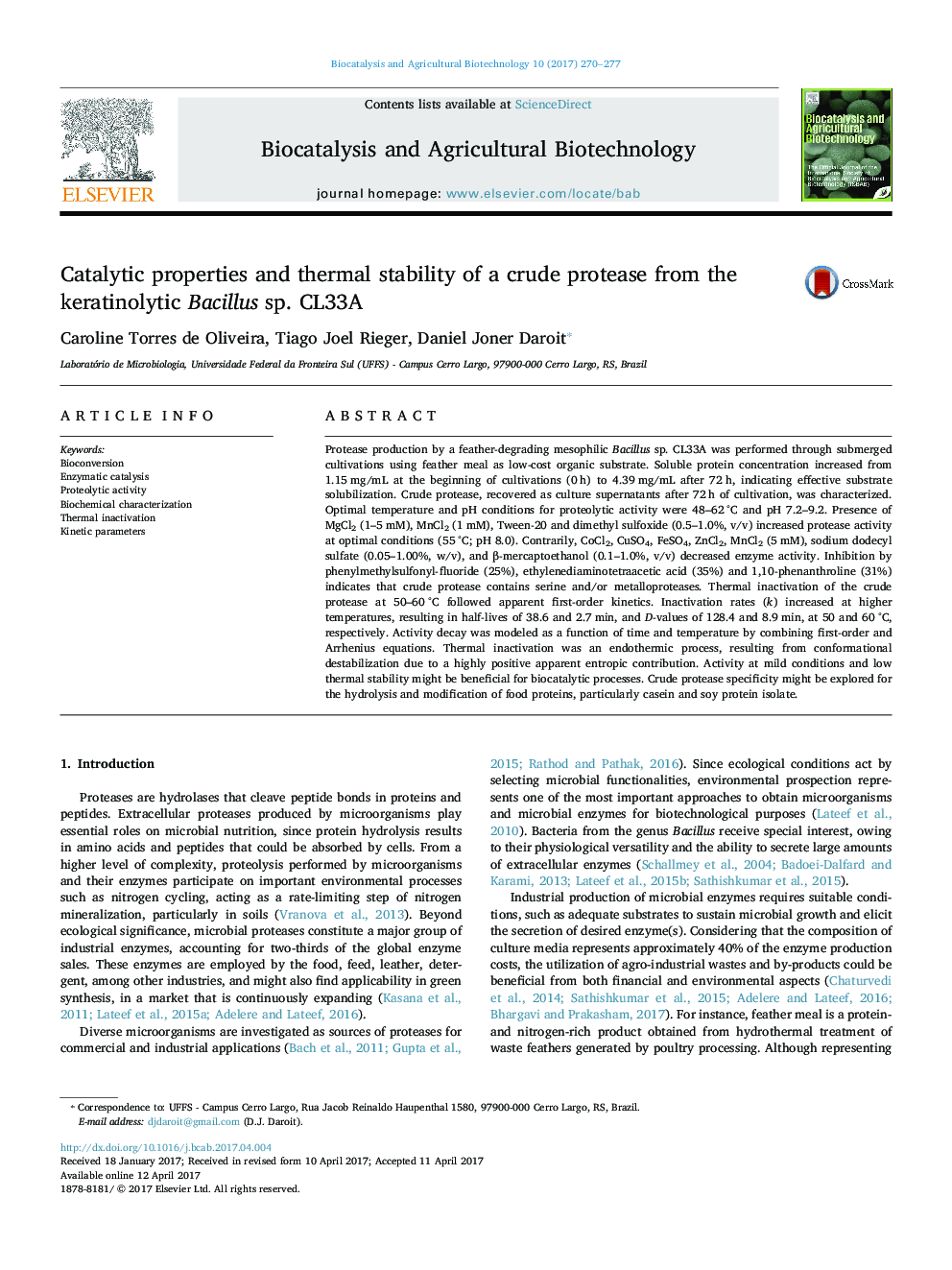| کد مقاله | کد نشریه | سال انتشار | مقاله انگلیسی | نسخه تمام متن |
|---|---|---|---|---|
| 5520468 | 1544902 | 2017 | 8 صفحه PDF | دانلود رایگان |

- Crude protease displayed optimal activity at 48-62 °C and pH values of 7.2-9.2.
- Effects of salts, solvents, detergents and protease inhibitors were evaluated.
- Thermal inactivation obeyed first-order kinetics (half-life of 38.6 min at 50 °C).
- Inactivation was modeled by combining first-order and Arrhenius equations.
- Protease was mainly active towards soy protein isolate, casein, and feather meal.
Protease production by a feather-degrading mesophilic Bacillus sp. CL33A was performed through submerged cultivations using feather meal as low-cost organic substrate. Soluble protein concentration increased from 1.15 mg/mL at the beginning of cultivations (0 h) to 4.39 mg/mL after 72 h, indicating effective substrate solubilization. Crude protease, recovered as culture supernatants after 72 h of cultivation, was characterized. Optimal temperature and pH conditions for proteolytic activity were 48-62 °C and pH 7.2-9.2. Presence of MgCl2 (1-5 mM), MnCl2 (1 mM), Tween-20 and dimethyl sulfoxide (0.5-1.0%, v/v) increased protease activity at optimal conditions (55 °C; pH 8.0). Contrarily, CoCl2, CuSO4, FeSO4, ZnCl2, MnCl2 (5 mM), sodium dodecyl sulfate (0.05-1.00%, w/v), and β-mercaptoethanol (0.1-1.0%, v/v) decreased enzyme activity. Inhibition by phenylmethylsulfonyl-fluoride (25%), ethylenediaminotetraacetic acid (35%) and 1,10-phenanthroline (31%) indicates that crude protease contains serine and/or metalloproteases. Thermal inactivation of the crude protease at 50-60 °C followed apparent first-order kinetics. Inactivation rates (k) increased at higher temperatures, resulting in half-lives of 38.6 and 2.7 min, and D-values of 128.4 and 8.9 min, at 50 and 60 °C, respectively. Activity decay was modeled as a function of time and temperature by combining first-order and Arrhenius equations. Thermal inactivation was an endothermic process, resulting from conformational destabilization due to a highly positive apparent entropic contribution. Activity at mild conditions and low thermal stability might be beneficial for biocatalytic processes. Crude protease specificity might be explored for the hydrolysis and modification of food proteins, particularly casein and soy protein isolate.
Journal: Biocatalysis and Agricultural Biotechnology - Volume 10, April 2017, Pages 270-277